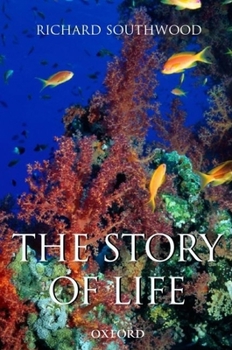The Story of Life
Select Format
Select Condition 
Book Overview
How did life begin? What really was 'snowball earth'? Why did the dinosaurs go extinct? Are we all descended from 'African Eve'? Will humans be responsible for the next r extinction? All these are addressed in this fascinating book. The story unfolds with the formation of the earth around four thousand million years ago, though it took until after massive bombardment by asteroids a hundred million years later for life to emerge and another fifteen million years until more complex life began to appear. Periods of relatively calm, like a kaleidoscope held still, were punctuated by five vigorous shakes of the kaleidoscope representing major extinctions, with innumerable minor jolts along the way. Five million years ago an able ape evolved that gradually came to dominate and control the other animals and plants. Evolution in all its complexity has been put aside and the future lies in the hands of single species. Southwood's love for his subject, and for the life he describes, shines through this carefully and straightforwardly crafted story. It is generously illustrated with line drawings showing the creatures and plants that inhabited the changing world and reconstructions of entire habitats, with maps of the globe that show the progress of the land itself.
Format:Hardcover
Language:English
ISBN:0198525907
ISBN13:9780198525905
Release Date:August 2003
Publisher:Oxford University Press
Length:272 Pages
Weight:1.44 lbs.
Dimensions:6.4" x 1.0" x 9.5"
Customer Reviews
3 ratings
compact, concise, wonderfully written
Published by Thriftbooks.com User , 16 years ago
Let me say first that you're not going to get an exhaustive thousand-page scientific tome covering vast amounts of detail. The book aims at breadth rather than depth--it might serve as the text for Geology 101 or the like. You get lots of drawings of represenative sample of life from the earliest stages up to the present. Each chapter has a nice map showing the continents that existed. So the strength here is the flavor of life rather than the minute details. There are plenty of books about, say, the Cretaceous that are rife with detail. But the problem might be that you're losing track of the overall view of the development of life. The book also covers the catastrophes--the mass extinctions. There are tables that plot the number of species in the different eras, and explanations of what caused the declines. This is not a book that deals heavily with controversy, although controversies are discussed. So you'll see the Conway Morris view of the Burgess Shale, and the Jay Gould view as well. This is basically a very well-written introductory work, and it is one that will whet your appetite for more detailed books.
Wonderful overview of the history of life
Published by Thriftbooks.com User , 19 years ago
I thoroughly enjoyed this book. It covers the history of life on Earth in surprising detail and includes very nice illustrations and diagrams that help clarify things. It is able to bring together the chemistry, biology, ecology, and geology in a single volume that was clear and fun to read. Not so technical that you need a degree in the field to understand it and yet not too simplistic so it does not bore those that do. A very good book.
A sweeping view
Published by Thriftbooks.com User , 21 years ago
This is an impressive book for anyone considering studies in any of the earth sciences. A swift, panoramic view of life's history, it is well organised and presented. Southwood examines some ideas concerned with life's beginnings, then moves along evolution's path. He sets the environmental scenario, describing continent formation and movement. He then describes how plant and animal life reacted to these changes. There's a wealth of good detail, supplemented by fine illustrations tied directly to the text.Among this book's attributes is the division of chapters by geologic ages. Opening the chapter with a world map of the period sets the environment. He explains how the shifting land forms impacted weather through changes in reflected sunlight and modified oceanic currents. With the environment fluctuating from warm and moist to cool, dry conditions, rainfall changed, forcing life to modify to survive. Some changes were too abrupt to follow and large extinction events resulted. Nowhere, from our viewpoint, were these changes more noteworthy than in human evolution. His chapter on that most significant topic provides an excellent overview of what is known. He provides a fine diagram of the various "hominins" but adroitly skirts the contentious issue of lineages. With such a vast subject range and limited space, Southwood has achieved a minor triumph. Research and assessment make earth sciences a dynamic discipline, with breakthroughs in the various subfields emerging more rapidly than ever before. He presents the latest information available without disturbing the flow of narrative. If this book has a shortcoming, it might be the "Further Reading" section which can only be described as sparse. While such a list can never be complete, a dozen titles that should have found a place here come to mind. That doesn't limit the value of this work, however, as the books cited are excellent resources for further reading. [stephen a. haines - Ottawa, Canada]





